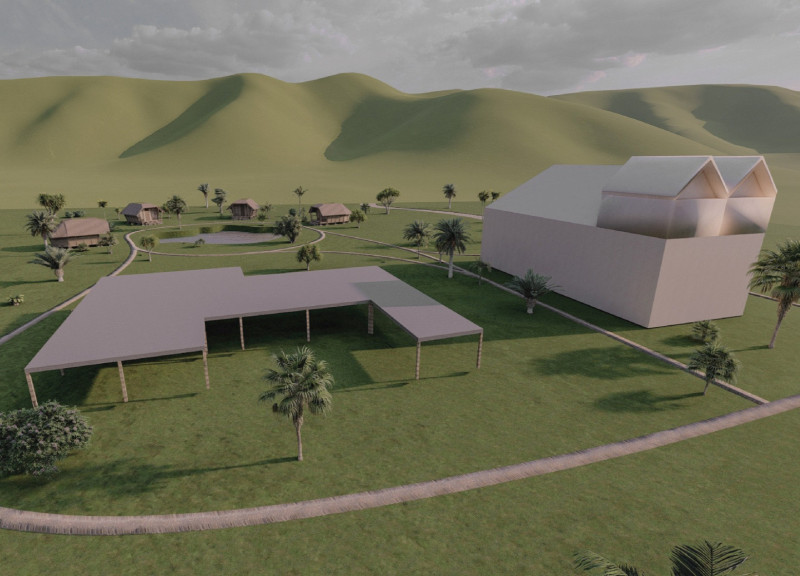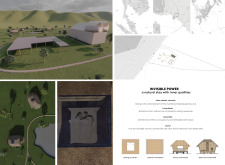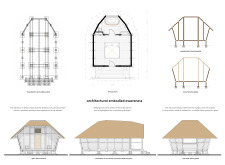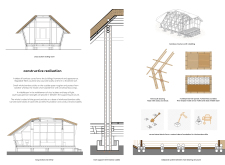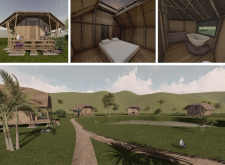5 key facts about this project
INVISIBLE POWER is located in the tranquil Andaman region, designed as a retreat that connects occupants to the natural setting. It offers spaces for reflection and relaxation. The arrangement includes a series of huts arranged around a central lake, which serves both as a gathering place and a serene backdrop for solitude. The overall design promotes a sense of peace, encouraging individuals to disengage from daily distractions.
Design Focus
The primary focus is on creating an environment that enhances awareness and tranquility. By minimizing outside distractions, the design fosters spaces where people can unwind and reflect. Each hut incorporates areas specifically for resting, with skylights that allow natural light to flood the interiors. This thoughtful approach encourages a deep sense of relaxation and a closer connection to nature.
Materials and Methods
Bamboo plays a significant role in the construction. It serves as the main structural element because of its strength and cultural significance. Sustainability is a key consideration, with locally sourced vegetable fibers used for thatched roofs. Clay is utilized in the walls to provide insulation and reduce light infiltration, ensuring comfort within the huts. Stone blocks are employed as foundations for the bamboo stilts, contributing to the stability of the structures.
Spatial Arrangement
Huts are strategically arranged around the central lake, balancing communal and private spaces. This layout invites both social engagement and personal reflection. Each hut creates an atmosphere that is both welcoming and relaxing. The overall look maintains a natural simplicity, designed to be functional while providing a peaceful retreat from the outside world.
Light plays a vital role in shaping the experience. Skylights brighten up the spaces and create a calm environment, enhancing the relationship between the occupants and their surroundings. This thoughtful detail helps to ground the architecture within nature, making the retreat feel both open and intimate.


